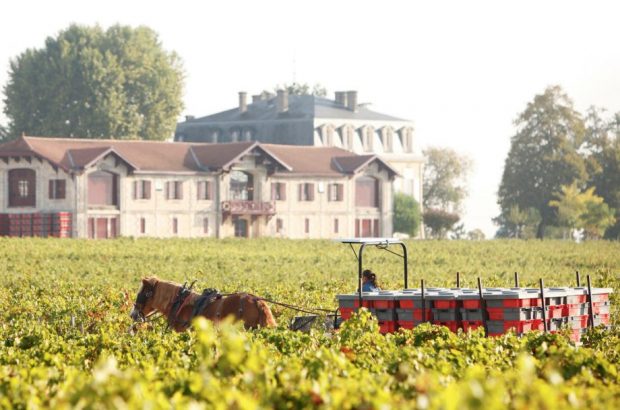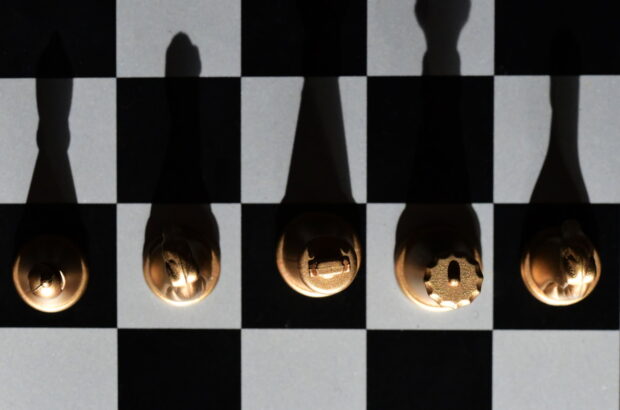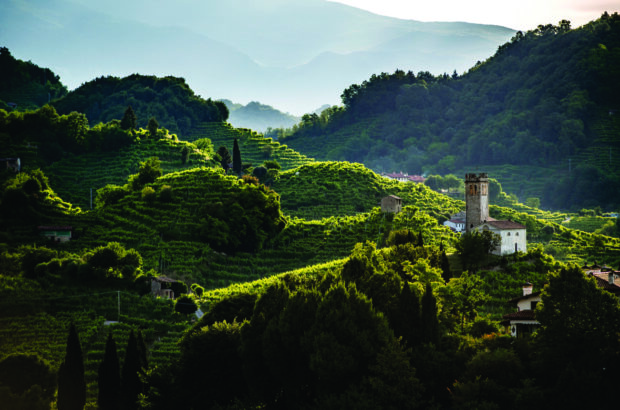Ready to explore one of the most magical wine regions around Bordeaux? A tranquil land of gentle slopes and misty mornings, defined by a thread of jade-hued water shrouded by overhanging trees, and punctuated by modest villages and medieval châteaux. Here family-owned properties rub shoulders with some of the world’s most famous wine estates, and modern winemakers are awakening the appellation’s luscious golden wines – and producing some exciting dry white wines – after decades of relative slumber. Welcome to Sauternes and neighbouring Barsac, together home to the greatest number of 1855 classified growths in the Bordeaux region – and the sweetest little wine getaway within a 45-minute drive of the city.
Over the past 15 years a thrilling yet underappreciated chapter in this small but mighty region’s history has been written by a fresh crop of winemakers. They are intent on giving a sprightlier lift to the sweet Sauternes that many felt had grown too opulent. The result? A fresher, easier-drinking wine that may just have the potential to nudge aside Champagne and ‘reclaim its historic role as a go-to French aperitif,’ says Saskia de Rothschild, executive chairwoman of Domaines Barons de Rothschild, owner of Château Rieussec.
In addition to perkier Sauternes, top producers are bringing vibrant new expressions to their dry Bordeaux whites, drawing on the Semillon and Sauvignon Blanc varieties. These dry wines are providing a gateway for a new generation of consumers to explore sweet Sauternes. And then, according to Laure de Lambert of Château Sigalas Rabaud, ‘visitors are hooked on Sauternes’ new vibrancy’. Hospitality initiatives such as de Lambert’s recent redo of her family’s historic vineyard charterhouse into a stylish bed-and-breakfast and visitor centre also signal a new era. From the property’s swimming pool, de Lambert, who is also president of the 50km Bordeaux Wine Route in Graves and Sauternes, points to the walls and towers of her neighbour in Bommes, Château Lafaurie-Peyraguey, parts of which date back to the 13th-century. ‘When Silvio Denz acquired Lafaurie-Peyraguey [in 2014] and transformed it into a Relais & Châteaux in 2018, I knew I had to make my move, too,’ she says. Today, Denz’s hotel is the most upmarket property in the region, and its Lalique restaurant just garnered a second Michelin star (see ‘My perfect day’, below).
‘Over the past 15 years a thrilling yet underappreciated chapter in this small but mighty region’s history has been written by a fresh crop of winemakers’
Sauternes-Barsac fact file
Area planted 1,900ha
Main grapes Semillon, Sauvignon Blanc and Muscadelle
Wineries 140 (27 grands crus classés en 1855, including premier cru supérieur Château d’Yquem)
Bottles sold per year 5 million (30% exported)
Events This year the Sauternes wine festival (@sauternes_barsac) takes place on 18 June (tourisme-sud-gironde.com), and in November are the annual winery open-house events and (12-13th) La Raisin d’Or marathon.
Source ODG Sauternes-Barsac, 2022
Perfect wine country

Château d’Yquem, the most famous of them all. Credit: Per Karlsson, BKWine 2 / Alamy Stock Photo
Experiencing the panoply of white wine expressions within the 1,900 hectares of this tiny Bordeaux appellation – the second smallest after St-Julien – is reason enough to visit. Throw in acclaimed fine-dining, a handful of family-owned country bistros, and a growing choice of accommodation stitched together by a network of well-marked wine routes more popular with tractors than tour buses, and Sauternes makes for just about the perfect wine country reboot.
Today, hand in hand with the fresher wines in the glass, there’s a simpler, more approachable atmosphere at properties that have traditionally been closed. Because 90% of this appellation’s wineries are family-run, your tour and tasting guide might be the third, or 13th, generation to work on the property. Since winemaking has become an increasingly challenging way to make a living, many property owners – from highest- ranked premier cru supérieur Château d’Yquem, owned by luxury goods group LVMH, to smaller estates such as Château La Clotte- Cazalis – in the same family since 1779 – are opening their cellars, along with their historic castles and gardens, to the public. Their aim is to introduce the joys of the region’s wines to younger consumers.
It’s been a slow but steady build in local hospitality – and wine styles – since 2011. That’s when Château Guiraud became one of the first 1855 classified growths in Bordeaux to be certified organic. Today, seven species of bumblebee and a rainbow of butterflies flutter among the estate’s pesticide-free gardens and vineyards, which can be explored by electric bicycle, available for hire. From the terrace of La Chapelle, the country-chic restaurant overlooking Guiraud’s undulating vineyards, locals and visitors dig into farm-fresh cuisine paired with local wines. Also in the works is a 26-room hotel with a pool and spa, a new wine cellar and a revamped visitor centre designed by Bordeaux-based architects Chadebost (also responsible for Château Cheval Blanc’s new chai, among others). Behind the plans is new majority shareholder Matthieu Gufflet, the French entrepreneur whose mission is to share the unspoiled beauty of lesser-known French vineyards through his high-end, sustainability- focused Terres de Natures hotel brand.
Other winery visits of note around Sauternes include Château de Rayne Vigneau for the excellent blending workshop or quirky treetop tasting; Château La Tour Blanche for its down-to-earth attitude, tranquil carriage rides and convivial ‘after-work’ sundowners in the vineyard; Château d’Yquem for its fascinating tour and stylish tasting room; and Château de Fargues, owned by the venerable Lur Saluces family since 1472, for a thought-provoking bridge between Sauternes’ past and present – book the Chef’s Table lunch after your tour for a special treat.
Bewitching Barsac

The barrel cellar at the 18th-century Château de Myrat. Credit: Graham Prentice / Alamy Stock Photo
A short drive away in neighbouring Barsac, Bérénice Lurton, of legendary first growth Château Climens, is another owner bringing soul back into the region’s wines through attentive stewardship of her historic property. A visit provides a window onto the region’s winemaking history from the 17th century – when the district began producing sweet white wines to meet the demand of Flemish merchants in nearby Bordeaux – to 2010, when Lurton and her estate manager converted the family estate to biodynamic production.
‘This is a humble region, with poor earth and unpredictable weather,’ Lurton admits, looking over the red clay and sand that bring minerality and crystalline elegance to her sweet and dry white wines, from 100% Semillon. ‘That’s why we can’t have big egos.’ She offers seasonal yoga and meditation sessions in the monastic loft above the winery, followed by a light lunch on the property – well worth planning ahead for.
Less well known but also worthy of a visit is Château Gravas, which sports a playful vibe and an art gallery in the wine cellar, and offers evening cultural events under the old magnolia. Book ahead for a tour, tasting or meal at Château Coutet and you may run into co-owner Aline Baly, who joined her family’s business in 2018 after many years abroad, mostly in the US. At Château Simon, the Dufour sisters run the family property (ask to see their father’s corkscrew collection). Château de Myrat, meanwhile, is owned by the de Pontac family and also run by two sisters; it’s a lovely estate with a jewel-box 18th-century castle and formal gardens.
My perfect day in Sauternes
Morning
Head for the visitor centre at Château Doisy-Daëne, flagship winery of the Dubourdieu family’s Barsac and neighbouring Graves estates, to sample (and purchase) its 20 wines, which range from sweet and dry whites to uncomplicated reds. Then stroll along Barsac’s drystone wall-lined lanes, cooled by the famous morning mist, to the Maison des Vins de Barsac, where you can refuel with a petit crème coffee at the bar. Aside from exploring its huge wine selection, you can shop for scented candles and regionally harvested caviar.
Lunch & afternoon
Take lunch on the parasol-shaded terrace of Château Guiraud’s La Chapelle (see p110), or more informally in the village at the cosy Auberge les Vignes. Then you can enjoy a leisurely paddle down the river Ciron, courtesy of the nautical club in nearby Bommes. Part of a protected natural corridor, the shady Ciron also flows past the majestic Château Royal de Cazeneuve, famous as the residence of the kings of Navarre – if you can make time in your agenda, it is worth calling in to tour the royal apartments and medieval cellar, and enjoy the gardens (open 2-5.30pm every day, 1 June to 30 September).
Evening
Head to your accommodation for the night, Château Lafaurie-Peyraguey, entering via the stately arched gateway. After freshening up, browse the gift shop for Lalique perfume, crystal table furnishings, artwork and, of course, wines, before settling into a lounge chair on the lawn for the Lalique bar’s signature aperitif, the refreshing Sweet’Z (concocted with Sauternes, naturally), and heading into the Lalique restaurant for dinner. Chef Jérôme Schilling’s heartfelt, creative cuisine garnered him a second Michelin star earlier this year. The sommelier may even grant you a peek into the 350,000-bottle wine cellars.
Your Sauternes address book

La Sauternaise B&B
The appellation’s main villages, Sauternes and Barsac, are only 10km apart. There are a limited number of lodging and dining options, so it’s advisable to reserve well in advance.
Sauternes
Château d’Arche is a charming 18th-century winery and hotel. Or, if you want to push the boat out, head to the famous Château Lafaurie-Peyraguey for sumptuous Relais & Châteaux accommodation and two-star Michelin dining (see ‘My perfect day’, above). Château Sigalas Rabaud ticks the box when it comes to country chic, and is a Best of Wine Tourism Gold award winner. Just outside Sauternes, in Budos, Domaine Cazenave is a laidback guesthouse with a pool, surrounded by trees.
In Sauternes village, the simple, contemporary style of Hotel le 23 reflects the youthful spirit of its owners, Arnaud and Severine Riotte, who also run the fantastic village bistro, Auberge les Vignes (see ‘My perfect day’, above), where countless wine deals have been done over the decades.
Across the street, there’s a sweet boutique B&B, La Sauternaise (+33 [0]6 78 00 64 18). And don’t miss the Maison du Sauternes, set to be expanded
in 2025, for winery tour information, tastings and wine purchases. Just outside the village, at La Table de Trillon, the daily lunch special is always a treat (and there’s a B&B on site). Another local restaurant of note, L’Entrecœur, shines for home-cooked meals by the fireplace or concert dinners in the courtyard (it also has wines for sale).
Barsac
In between the lively market town of Barsac and the village of Sauternes, near Pujols-sur- Ciron, the simple guest house at Clos Floridène, adjacent to the modern winery, overlooks tranquil vineyards stretching to the river Ciron. Also on the river, winemaker Marie-Pierre Lacoste-Duchesne, whose family has owned Château La Clotte-Cazalis (see above) since 1779, updated her grandparents’ old manor house with three B&B rooms. Don’t miss the vintage equipment in the winery and a taste
of some of the region’s best modern-style wines (in organic production since 2015).
How to get there
The nearest airport is Bordeaux-Mérignac, on the western outskirts of the city. If travelling by train, take the Paris-Bordeaux TGV (three hours) into Gare St-Jean. By car, head south from Bordeaux via the Bordeaux Wine Route – download the Graves et Sauternes Oenovisa ‘wine passport’ for special deals en route. Or for speed, take the autoroute A62 (55km).

Credit: Maggie Nelson












